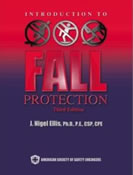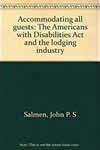expert witnesses
Orientation / Mobility Specialists Expert Witnesses: 1
Sort Non-Featured Profiles
Select Experts. Start Inqury.
Accessibility Design Expert Witness Bassam Altwal
Bassam Altwal, CASp
77 Van Ness Ave., # 101 MS 1515
San Francisco CA
94102
USA
phone: 415-310-3010
fax: 8776-103-773
Featured resources
The Expert Expert Witness : More...
by Stanley L. Brodsky
Introduction to Fall Protection...
by J. Nigel Ellis, PhD
Accommodating all guests: The...
by John Salmen, AIA
Follow us









